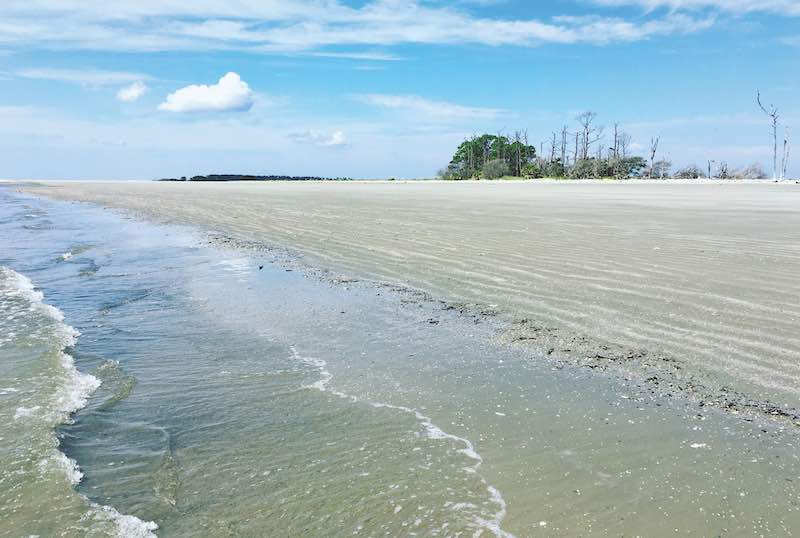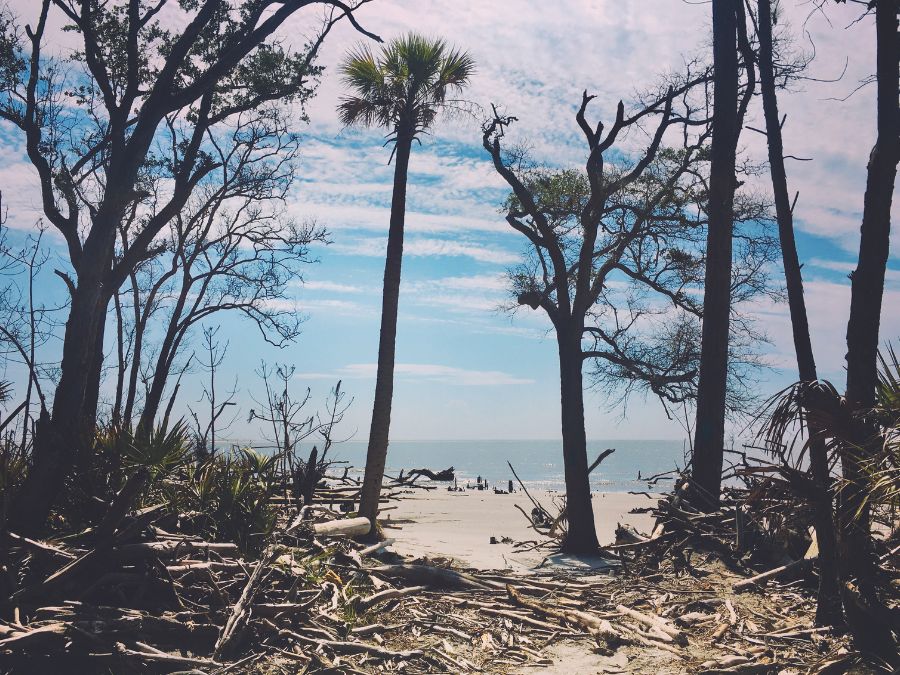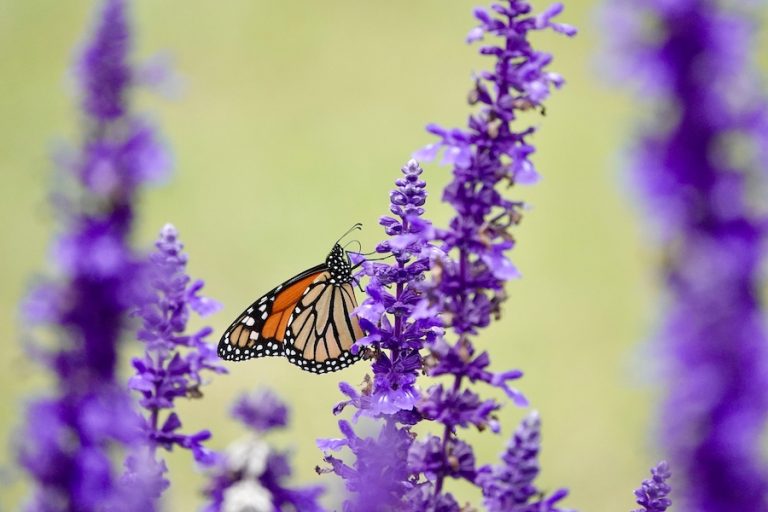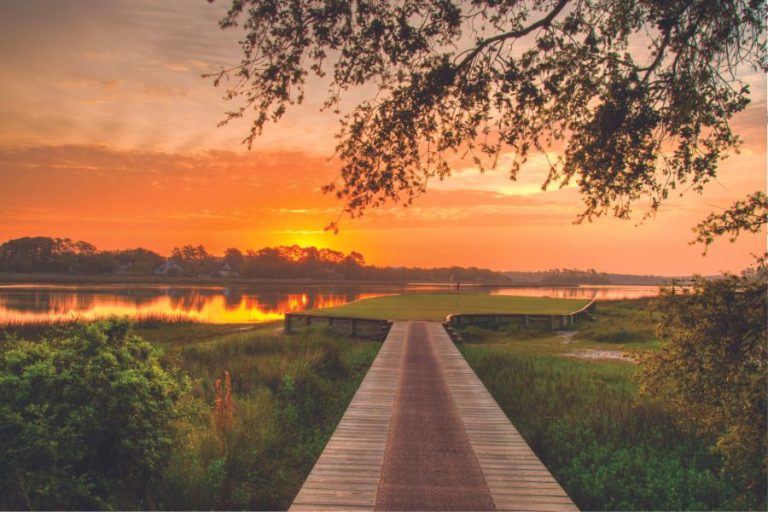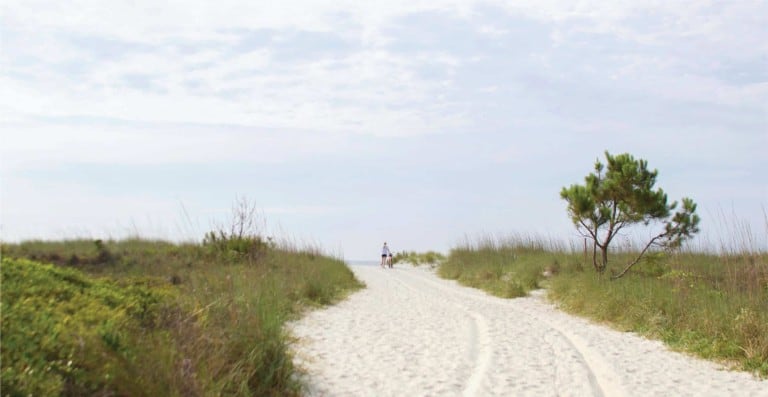12 hidden natural gems in the Lowcountry
Nature’s secrets. Discover the Lowcountry’s wild side with 12 hidden natural gems for each month.
Story + Photography by Michele Roldán-Shaw
The Lowcountry’s mild climate allows us to get out in nature all year long. Yet certain habitats recommend themselves according to the season. For example, summer is not the best time to go tramping through the woods, while a windy winter day is too chilly for the beach. With popular spots likely to be crowded at ideal times, it helps to know the less-traveled places. So we’ve put together a year’s worth of hidden gems to help you optimize your Lowcountry outdoor experiences — from cypress swamps in spring and barrier island beaches in summer, to deciduous forests in fall and golden marshes in winter.
January
Savannah River Nature Trail, Webb Wildlife Management Area
This 4.2-mile hike runs through floodplain forest to the banks of the Savannah River. There are grand old bald cypress trees here, beautiful forest glades and a deep rural silence. The downside is that trail maintenance is unreliable. (The Webb is primarily managed for hunting, and it seems they don’t pay much attention to the nature trail, which is located in a safety zone.) The path can be hard to follow at times, and you either need to go after a dry spell or wear rubber boots, as the low-bottom woods are subject to periods of natural flooding. Rugged and unmanicured, this hike is not for the faint of heart.
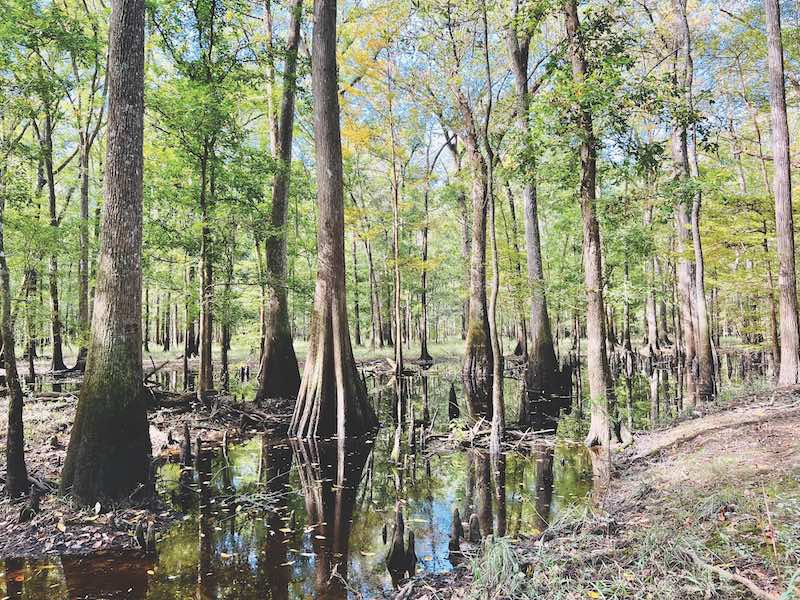
Location: Garnett, South Carolina
Activities: Hiking, photography, wildlife observation
What to bring: Bug spray, snacks, water
Wildlife to watch for: Wild hogs, wild turkeys, deer, pileated woodpeckers, fox squirrels
Nearby attractions: There is a 1.2-mile canoe trail in the Webb. And they may or may not have live baby alligators in the wildlife center office. Adjacent Palachucola Wildlife Management Area offers many more miles of dirt roads to explore.
Fun fact: The property used to be a racehorse training farm before it was purchased by the state in 1941.
Visitor tips: Check online for the Savannah River water level at Clyo, Georgia. If it’s over six feet, you can expect flooding on the trail. Also check the SCDNR website for dates when the property is closed for special hunts. There is no hunting on any state lands on Sundays.
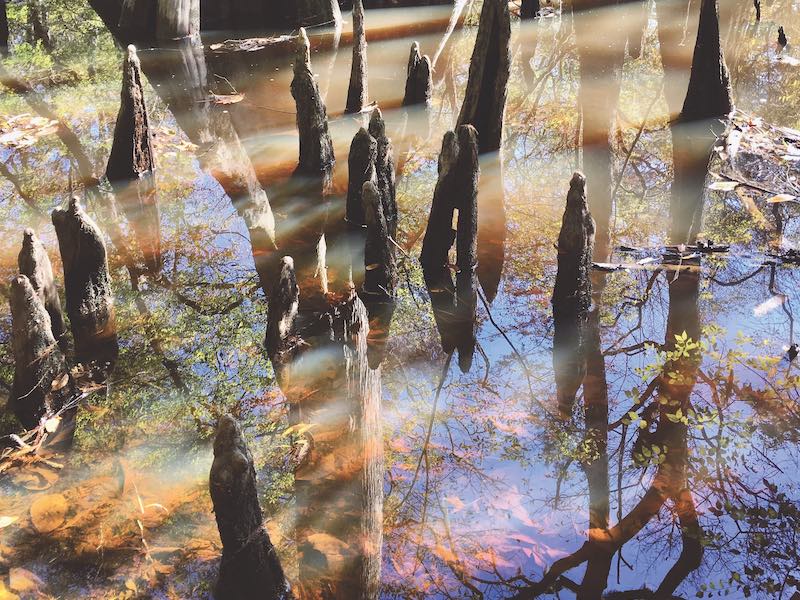
February
Harris Neck National Wildlife Refuge
With 15 miles of trails winding through woods and fields, around ponds and along marsh edges, this beautiful refuge is great to explore by bike. (You also can hike or take a scenic driving tour.) Mild winter days are ideal, as the sunny fields and brilliant gold marsh grass offer much-needed light in the darkest season. With its mix of freshwater and saltwater habitats, Harris Neck is an important stop on the Atlantic Flyway, so the birdwatching here is top-notch.
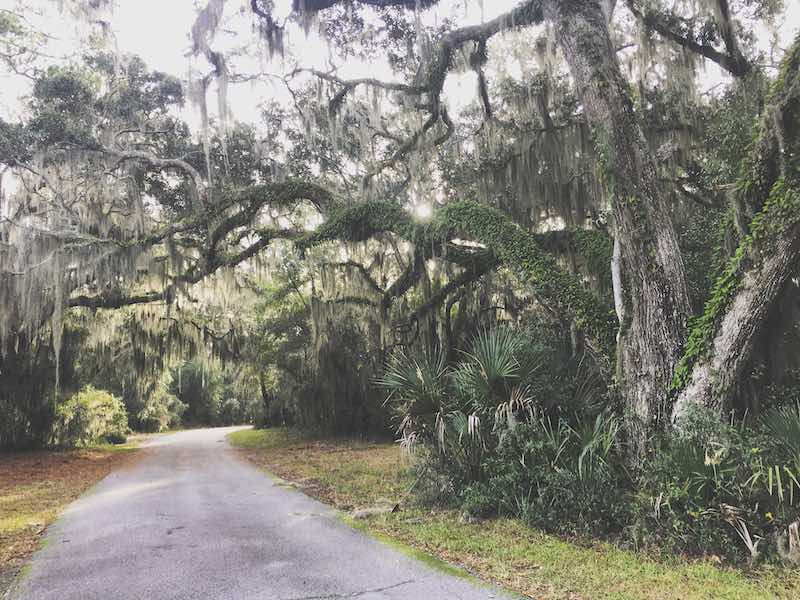
Location: Townsend, Georgia
Activities: Hiking, biking, birdwatching, photography
What to bring: Bikes, binoculars, a blanket, a picnic
Wildlife to watch for: Waterfowl, migratory birds, raptors, songbirds
Scenic highlights: Ruins of a 19th-century romantic garden and a cemetery with headstones dating back to the 1800s.
Cultural significance: Harris Neck was once home to a thriving Geechee community before the U.S. government seized the land to build an Army airfield (later abandoned.) There is a movement to reclaim it by displaced families who propose to live there in a sustainable way while keeping most of the land open to the public (harrisnecklandtrust.org).
Visitor tip: No dogs allowed.
Nearby attractions: The quaint coastal town of Darien, Georgia, is a fun place to spend a few hours. Try Skipper’s Fish Camp for lunch.
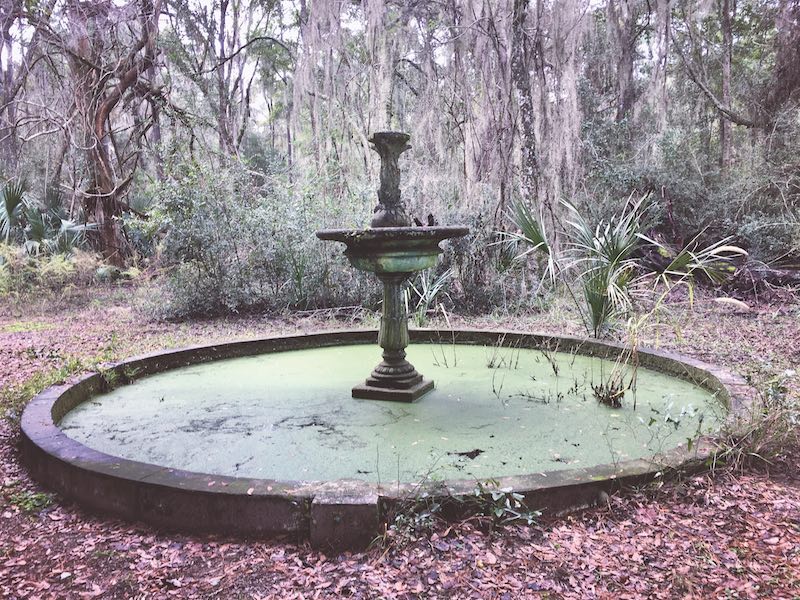
March
McQueen’s Island Trail
Following the old railbed of a train that once took passengers from Savannah to Tybee Island, McQueen’s Trail offers a long, flat walk on a finger of land in the marsh. There is a pleasant monotony to the bright white shell path lined with palmettos, the river running parallel and the blue sky above. On a windy day in March the rustling palmettos cover the noise from Highway 80, while the sun and salt air make you feel alive.
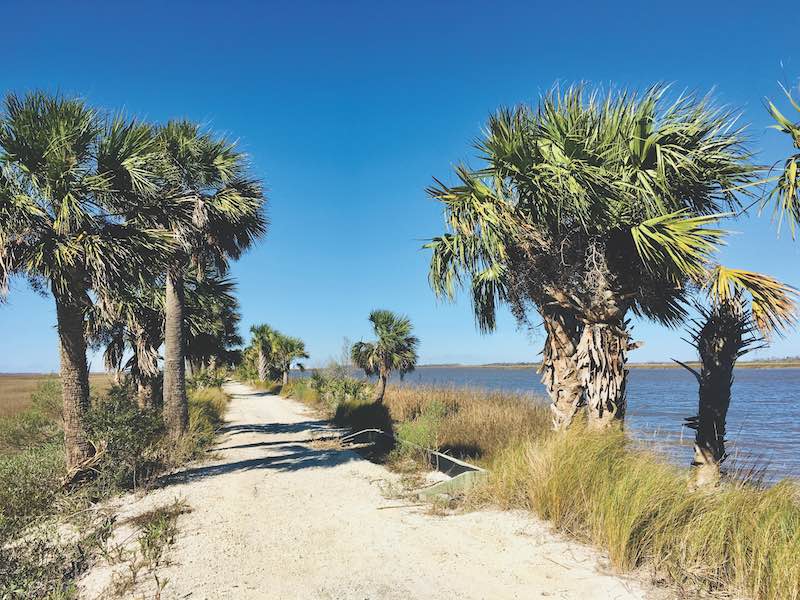
Location: Tybee Island, Georgia
Activities: Walking, jogging, biking, picnicking
What to bring: Binoculars, extra layers
Wildlife to watch for: Dolphins, turtles, diamondback terrapins, pelicans
Visitor tip: The trail was heavily damaged by storms in 2016 and closed for several years. It is now open again, but there is still some ongoing repair work.
Nearby attractions: Fort Pulaski and Tybee Beach
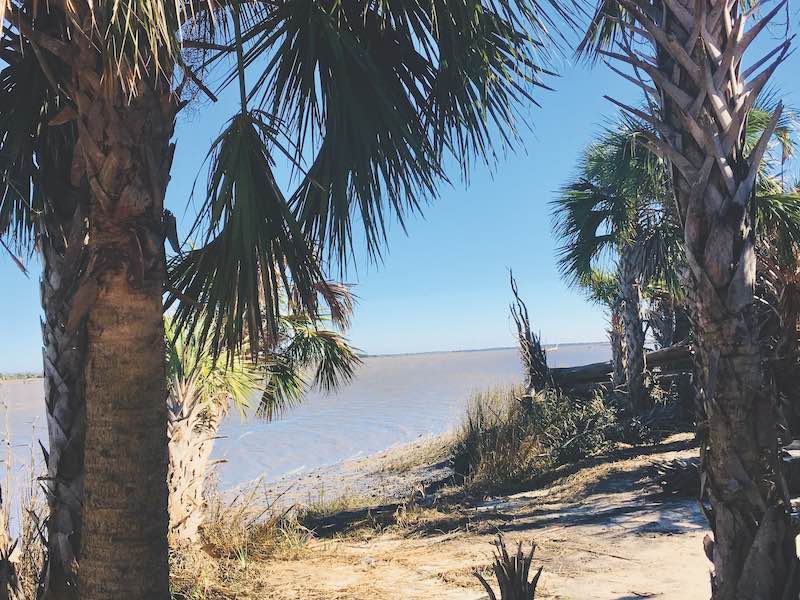
April
Tupelo Trail, Savannah National Wildlife Refuge
This 3.38-mile, one-way trail traverses former rice fields, upland hardwood forest, floodplain forest and the shores of Kingfisher Pond. But the standout portion is the little swamp. Each spring it bursts to life with masses of native blue flag irises that bloom in the muck between cypress knees and tupelo trunks. Thousands of indigo and yellow flowers create a sylvan scene that refutes all notions of evil swamps. With that said, if you go on a hot day, plan to step over alligators and cottonmouths.
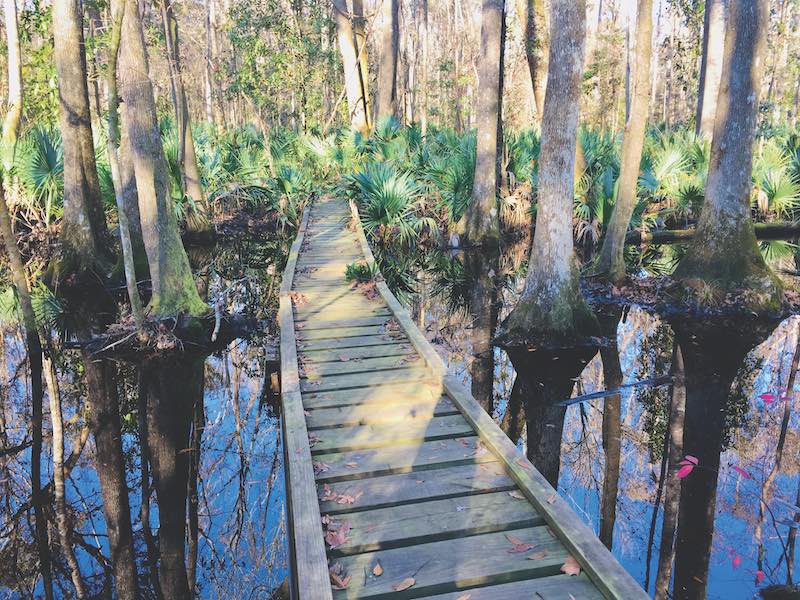
Location: Hardeeville
Activities: Hiking, photography, wildlife observation
What to bring: Water, snacks, bug spray
Wildlife to watch for: Alligators, snakes, bobcats, wood ducks, river otters, purple gallinules
Visitor tip: There are two trailheads, but only the one at Kingfisher Pond off Highway 17 is open. The rice field area, accessed via Highway 170 before the bridge to Port Wentworth, is closed for habitat restoration.
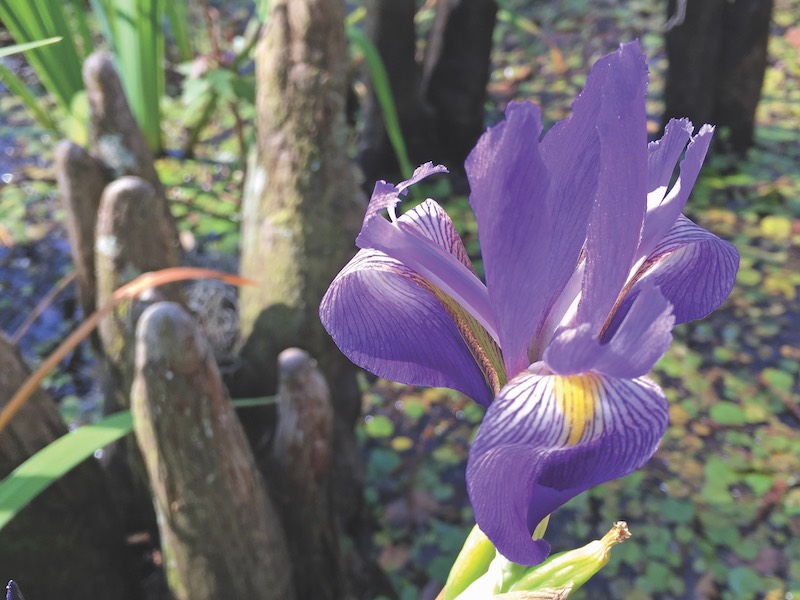
May
White Point, Pinckney Island National Wildlife Refuge
Pinckney Island is a well-known destination, but most visitors never make it beyond the rookery ponds a mile or so in. White Point is the farthest reach, over three miles one-way from the parking lot, and while you can ride your bike for most of it, at the end you’ll have to proceed on foot. You are practically guaranteed solitude at that point, as you explore a wild bleached shell reef jutting into Port Royal Sound.
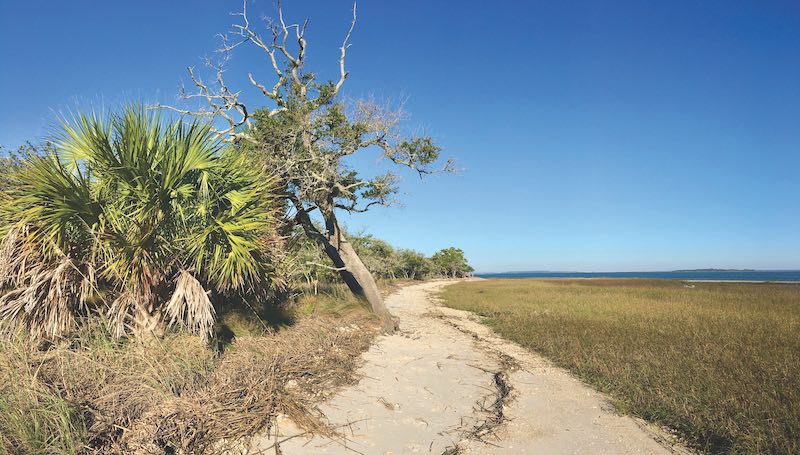
Location: Pinckney Island
Activities: Hiking, biking, birdwatching, photography
What to bring: Bikes, water, snacks
Wildlife to watch for: Fiddler crabs, butterflies, raccoons, armadillos, foxes
Historical significance: The prolific Pinckney family owned the island for over 200 years. At one time it was a plantation that produced highly sought-after Sea Island cotton.
Fun fact: The 4,053-acre refuge includes Corn Island, Big and Little Harry islands, Buzzard Island and numerous small hammocks. None are open to the public.
Visitor tip: Don’t be afraid to go off-trail at Pinckney. At low tide the sand flats are wonderful to explore, and the creek banks offer many lovely spots to sit and contemplate.
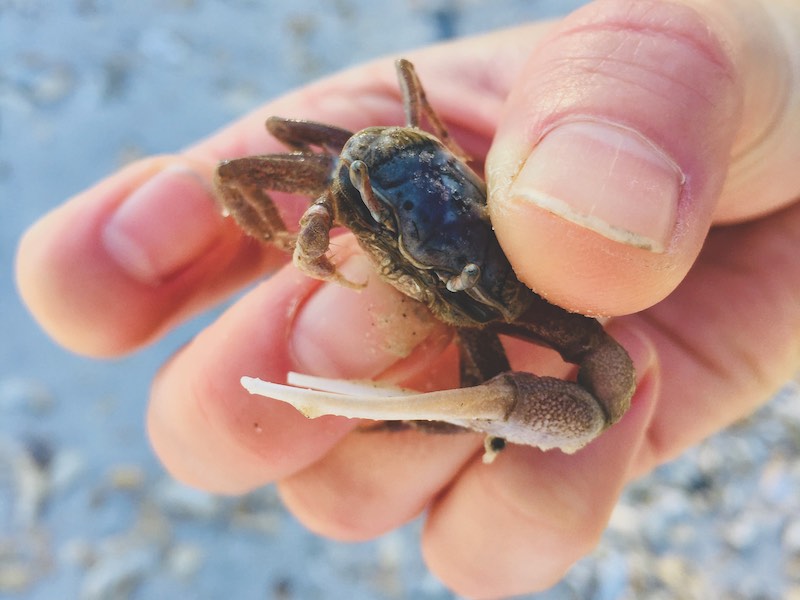
June
Abercorn Creek
The banks of this Savannah River tributary explode with wild spider lilies in early summer. The spindly white blooms of Hymenocallis occidentalis are found in wetlands throughout the Southeastern United States, and a rare variety called the Rocky Shoals spider lily puts on a showy display in South Carolina’s Catawba River. At Abercorn Creek the divinely fragrant lilies intermingle with elephant ears, palmetto fronds and wild grape vines for an exotic feel more akin to Florida than the Lowcountry. Other than that, there’s not much to see on this quiet, unfrequented waterway, so don’t plan for an all-day excursion.
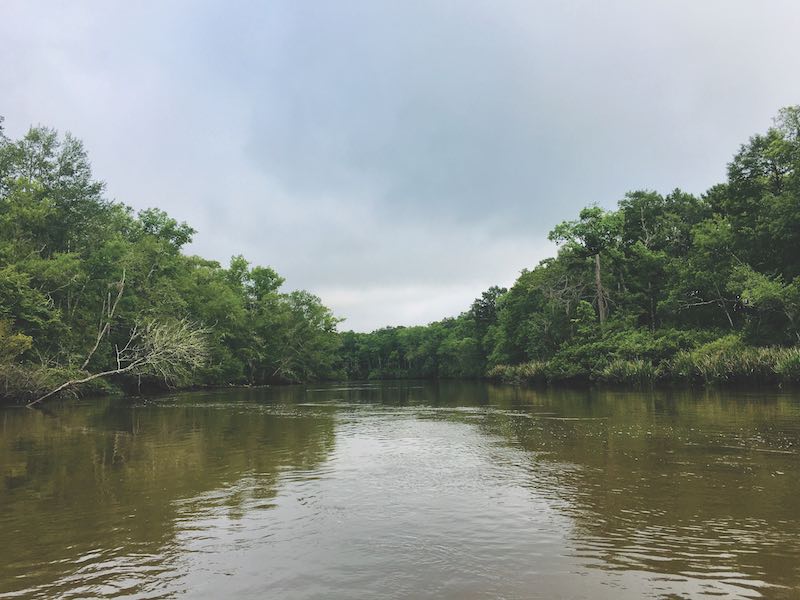
Location: Rincon, Georgia
Activities: Paddling, boating, botanizing
What to bring: Water, snacks, life vest
Wildlife to watch for: Gators
Historical significance: The extinct settlement of Abercorn was founded nearby in 1733, but the 10 families who planned to live there soon found it inhospitable. The site was abandoned a few years later.
Visitor tip: There is nowhere to land a boat in this boggy terrain, so plan accordingly for the calls of nature.
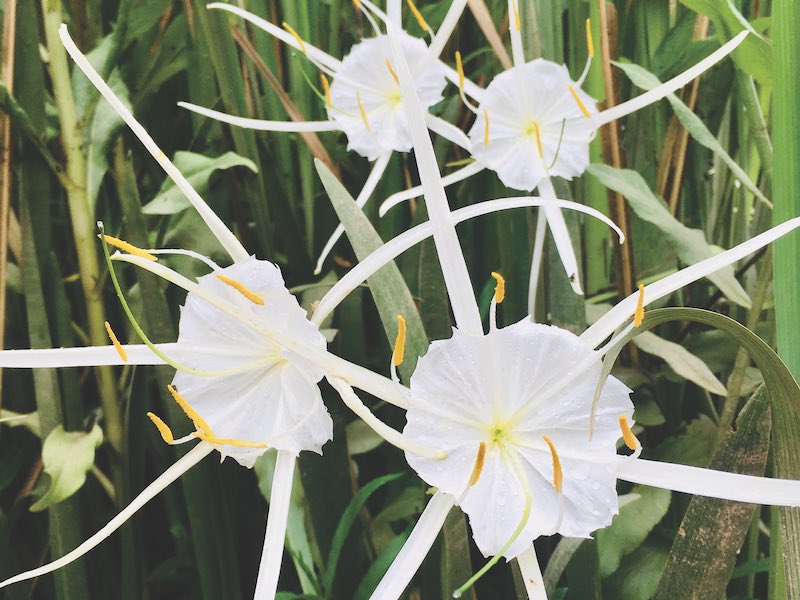
July
Botany Bay Plantation Heritage Preserve
Enjoy a wonderful beach day at Botany Bay, where the wild boneyard stands in stark contrast to the heavily developed coastal communities surrounding it. This 4,600-acre preserve once comprised the Bleak Hall and Sea Cloud plantations, which were combined by a subsequent owner before being sold to a sportsman who later bequeathed it to the state. Bits of history can be found throughout the property—tabby ruins, a carriage house, a rare “beehive well” and a brick foundation of the old plantation house. But in summer at least, you’ll want to spend most of your time at the beach.
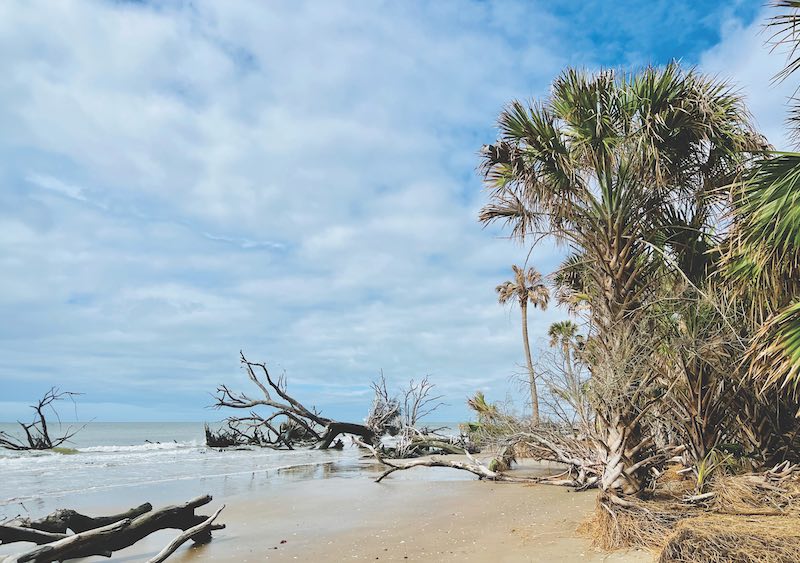
Location: Edisto Island
Activities: Swimming, sunbathing, hiking, historical sightseeing, photography
What to bring: Swimsuit, sunscreen, towels, water, sandwiches
Wildlife to watch for: Ghost crabs, horseshoe crabs, sea turtles, terns, sandpipers, pelicans
Fun fact: The “Ice House,” one of the few original structures still standing, was once used to store blocks of ice that were packed in sawdust and shipped down from the North.
Visitor tips: It is illegal to remove anything from the beach at Botany Bay (shells, artifacts, driftwood, etc.) Volunteers stationed near the parking lot will be sure to remind you of this, should you forget.
Nearby attractions: The Edisto Island Serpentarium is a wonderful place to learn about local reptile species. You can admire venomous and nonvenomous snakes in their natural habitats, watch gators eat chicken every day at noon and perhaps even see the staff collect venom from rattlers. The little food truck behind nearby Flowers Seafood offers some darn good local eats.
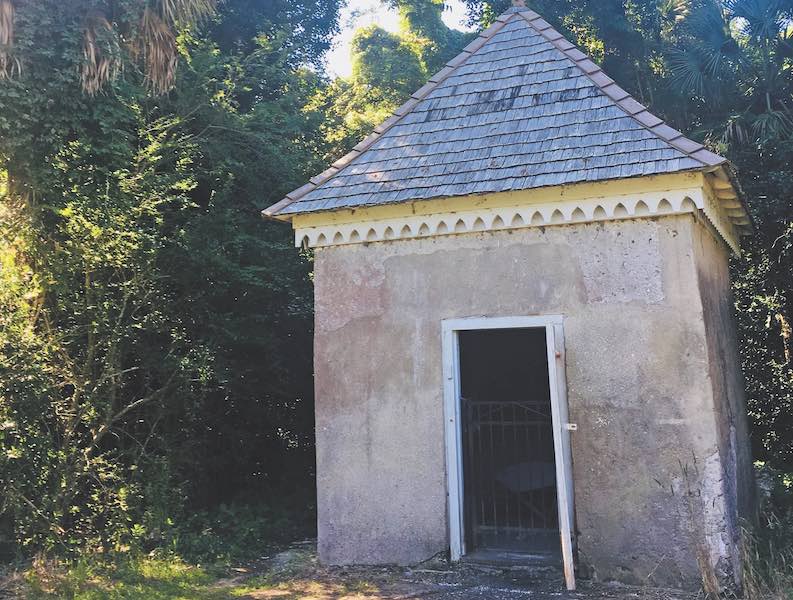
August
Little Tybee Island
This pristine, uninhabited island is just a short paddle from Tybee Beach, yet it’s worlds away. With 6,780 acres of saltwater marsh, creeks, wooded hammocks and oceanfront beach, Little Tybee is actually bigger than Tybee, but with less high ground. A whole week’s worth of backcountry paddling and camping could be found here. With no facilities and no way to get there except by boat, Little Tybee is only for the adventurous. Experienced paddlers may try to reach it on their own, but for everyone else there are guided tours and boat charters. Be sure to practice the “leave no trace” wilderness ethic by packing out everything you bring in.
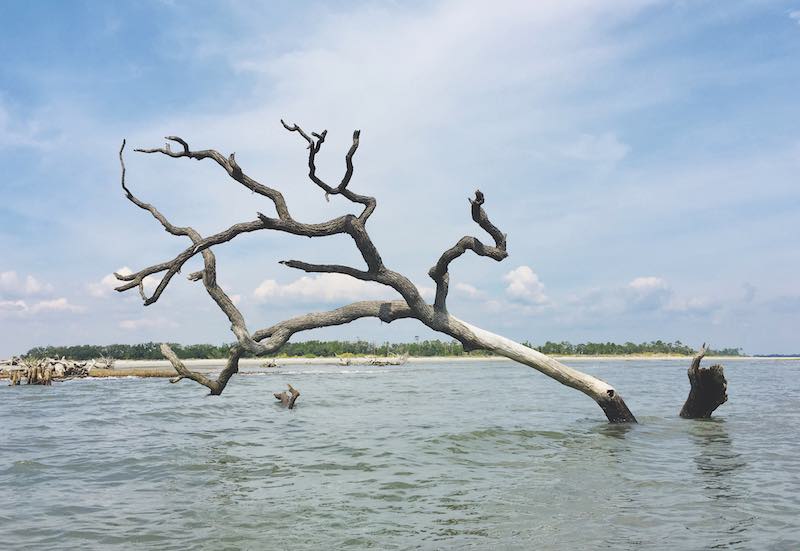
Location: Just south of Tybee Island
Activities: Paddling, camping, swimming, beachcombing, wildlife observation, photography
What to bring: Plenty of water and emergency gear such as spare food and clothing, first-aid kit, signaling devices, etc.
Wildlife to watch for: Dolphins, manatees, sea turtles, bald eagles, least terns, roseate spoonbills, wood storks
Fun fact: The 1996 Summer Olympic yachting events were held at Little Tybee in a temporary marina built in Wassaw Sound.
Visitor tips: Do not underestimate the treacherous currents and conditions of this area. You should either have advanced sea kayaking experience, or you should go with a licensed tour operator. Sea Kayak Georgia (seakayakgeorgia.com) and Savannah Canoe and Kayak (savannahcanoeandkayak.com) both offer trips to Little Tybee.
Nearby attraction: Wassaw Island National Wildlife Refuge, just to the south, is the only Georgia barrier island that has never been cleared. It’s another epic destination for the daring, via kayak tour or charter boat.
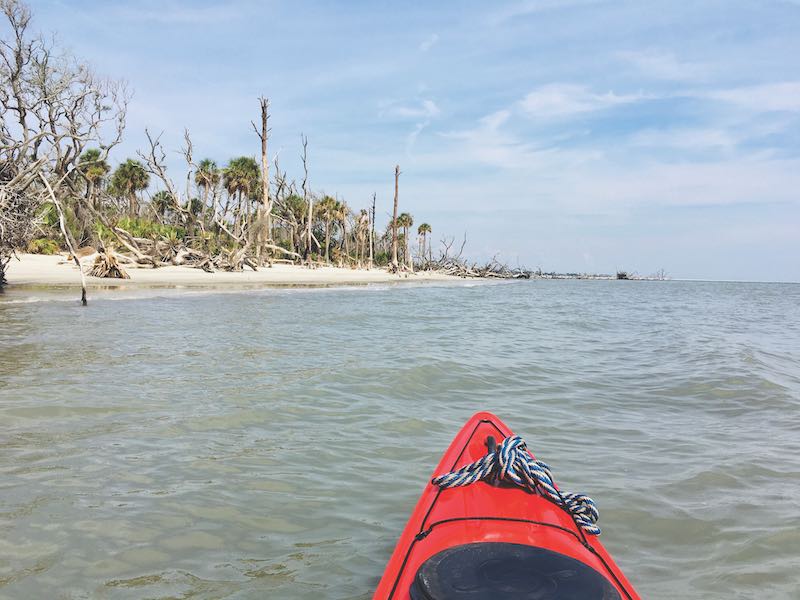
September
Wormsloe State Historic Site
This is a place where history comes to life. A picturesque arched gate opens onto an avenue of oaks. The Colonial Life Area contains a charming replica of a wattle-and-daub hut. A museum holds artifacts unearthed onsite, and the heritage garden contains heirloom veggies grown as part of a nonprofit seed-sharing program. (You can request free okra, squash, pepper and field pea seeds at socialrootsseeds.com.) Wormsloe’s tabby ruins —fortifications that protected the plantation house from Spanish attacks in the 1700s — are some of the largest and most evocative in the area. There is also a 3-mile loop trail winding through quiet woods and along the edge of Moon River, which was named for the hit song written by Savannah native Johnny Mercer.
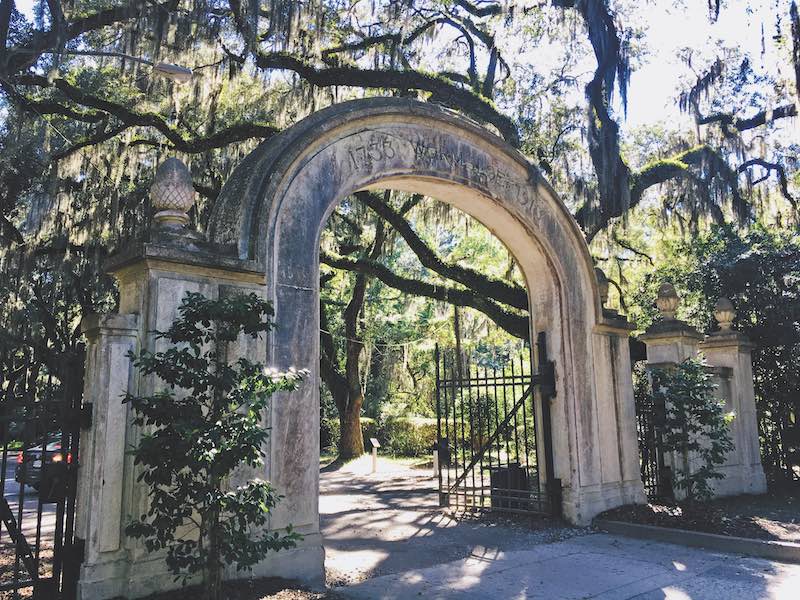
Location: Isle of Hope, Georgia
Activities: Hiking, historical sightseeing, photography
What to bring: The dog, which is welcome on a leash in outdoor areas.
Wildlife to watch for: Deer, raccoons, egrets, lizards, snakes
Scenic highlight: The classic avenue of oaks.
Historical significance: Wormsloe’s tabby ruins are the oldest structures in Savannah.
Fun facts: Pioneering botanist William Bartram visited Wormsloe in 1765, sampling its oranges, peaches, figs, apricots, pomegranates and mulberries. Scenes from many movies were filmed here, including Roots, The General’s Daughter and the 2023 musical adaptation of The Color Purple.
Visitor tip: Check Wormsloe’s online calendar for special events and programs, including the annual Colonial Faire and Muster, held this year on Feb. 11.
Nearby attraction: Skidaway Island State Park offers 6 miles of hiking trails and a shady campground nestled in the maritime forest.
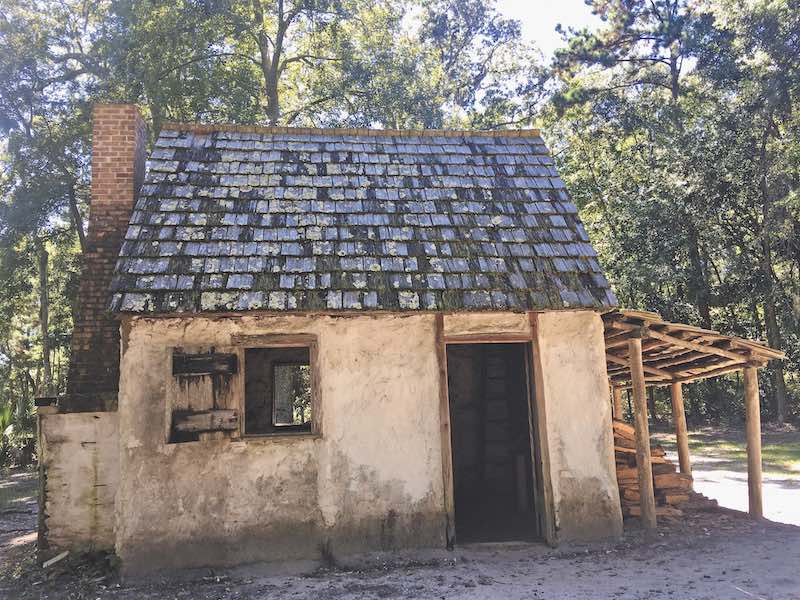
October
New River
You’ve driven the back road from Bluffton to Savannah a thousand times, but have you ever noticed the New River? The Highway 170 bridge, just after the New Riverside traffic circle, passes over a rustic little boat landing. Here you can launch into a surprisingly wild waterway that bears nothing in common with the increasingly crowded Bluffton boating scene. The New River has no docks, no homes, no “Redneck Riviera” — it barely even has any boats. What it does have is mile after mile of brackish marsh and wooded shorelines — touched with fall color in October — some of which may not have seen human footprints for decades. Eventually, the New comes out behind Daufuskie in a remote labyrinth of channels that slice through salt marsh to the Atlantic. Take a right from the landing, and you’ll be headed out to sea. Take a left, and you can explore the New River headwaters, a hidden stretch that eventually winds up in the swamps behind Sun City. This is a side of Bluffton that few ever see.
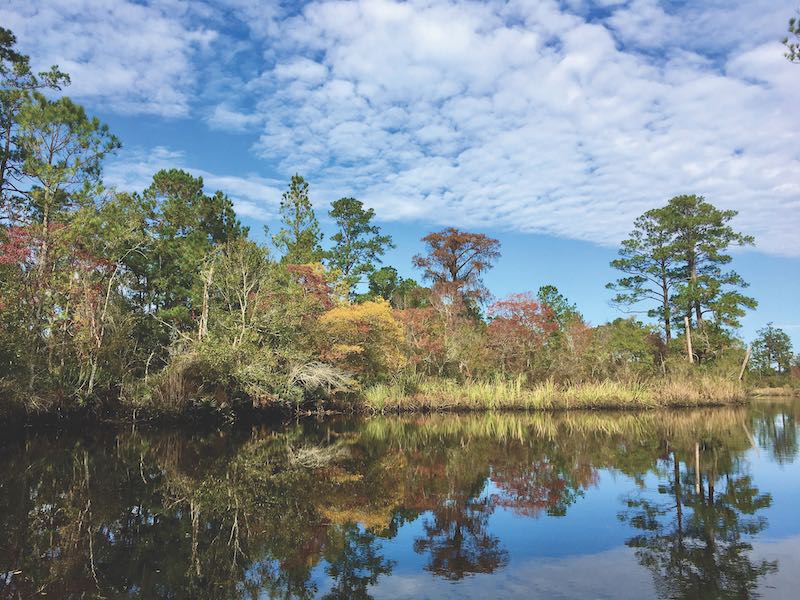
Location: Pritchardville
Activities: Boating, paddling, wildlife observation, photography
What to bring: Snacks, water, life vest
Wildlife to watch for: Gators, turtles, wild hogs, eagles, ospreys, fish
Cultural significance: Carolina Gold rice was once grown along the New River, and man-made canals branching off the main channel remain from that era.
Visitor tip: The headwaters are best explored by kayak (with some portaging required), while downstream from the bridge is most suitable for motorboats.
Nearby attraction: The New River Linear Trail is a 6.7-mile walk along an old railroad bed.
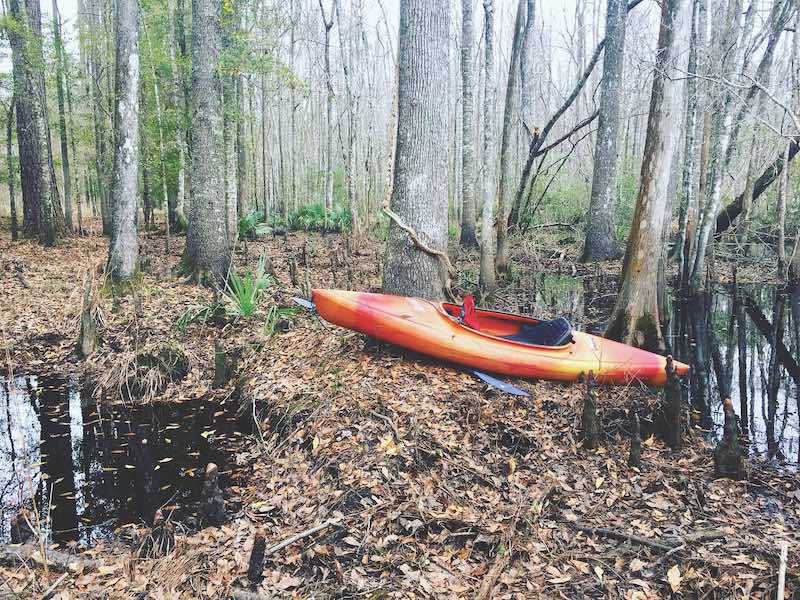
November
Ebenezer Creek
This blackwater tributary of the Savannah offers spectacular paddling through one of the last remaining old-growth bald cypress swamps in the world. Put in at Tommy Long boat landing and take a right to float downstream to the Savannah, or go left and explore the headwaters. Fall is magnificent with the turning colors—bald cypresses are one of the few deciduous conifers—but spring is also nice, as tender new-green tips come out, and the air is perfumed with jessamine.
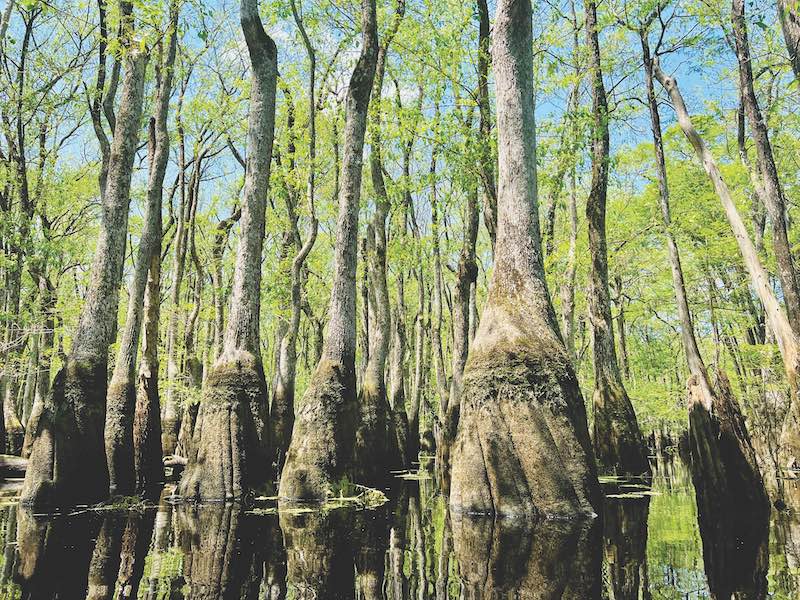
Location: Rincon, Georgia
Activities: Canoeing, kayaking, photography
What to bring: Water, snacks, life jacket, waterproof cell phone case
Wildlife to watch for: Alligators, snakes, owls, ibis
Historical significance: The Massacre of Ebenezer Creek took place here during the Civil War. A column of Union troops was marching to Savannah with hundreds of newly freed slaves in tow. The soldiers built a bridge over the creek but would not let the Black people cross to escape pursuing Confederates. In a panic many rushed into the frigid waters and drowned, while others were slaughtered or recaptured when Confederates arrived. The tragedy sparked public outcry.
Visitor tip: While the creek is slow-moving and easy to paddle, the Savannah River may have dangerous currents. Guided tours of Ebenezer are available through Savannah Canoe and Kayak (savannahcoastalecotours.com) and Savannah Coastal EcoTours (savannahcoastalecotours.com)
Nearby attraction: The ghost town of New Ebenezer is a fascinating site with historic buildings, a living museum, an outdoor amphitheater and the oldest continuously worshipping Lutheran church in the nation. Check the Georgia Salzburger Society (govisitebenezer.com) for visiting hours.
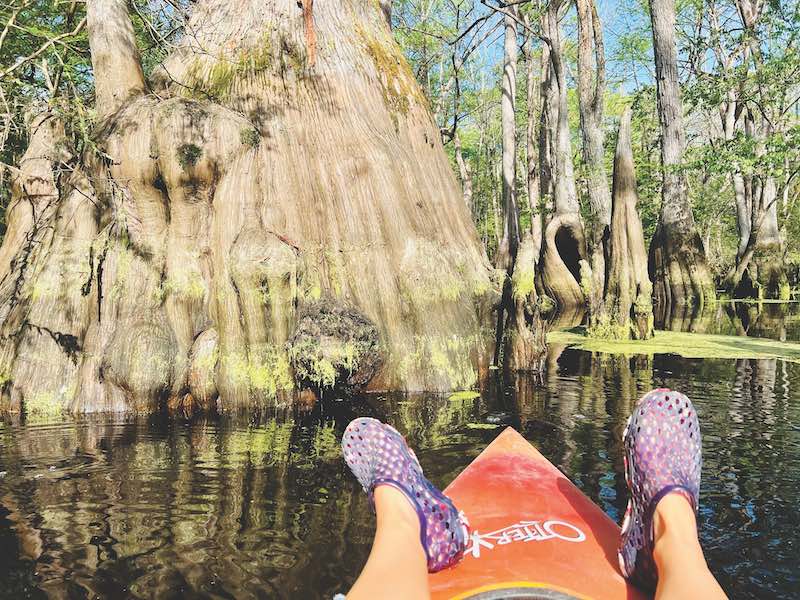
December
St. Phillips Island
This unspoiled barrier island was once the private vacation home of media mogul and conservationist Ted Turner. (The Ted Turner House is available for rent through South Carolina State Parks.) The beach is pretty enough, but the real reason St. Phillips constitutes a hidden gem is the old-growth maritime forest. It has never been timbered, so the palmettos reach giddy heights, and the magnolias branch out in full grandeur. A mild day in December is perfect for enjoying the forest, which becomes a buggy hell-hole in summer.
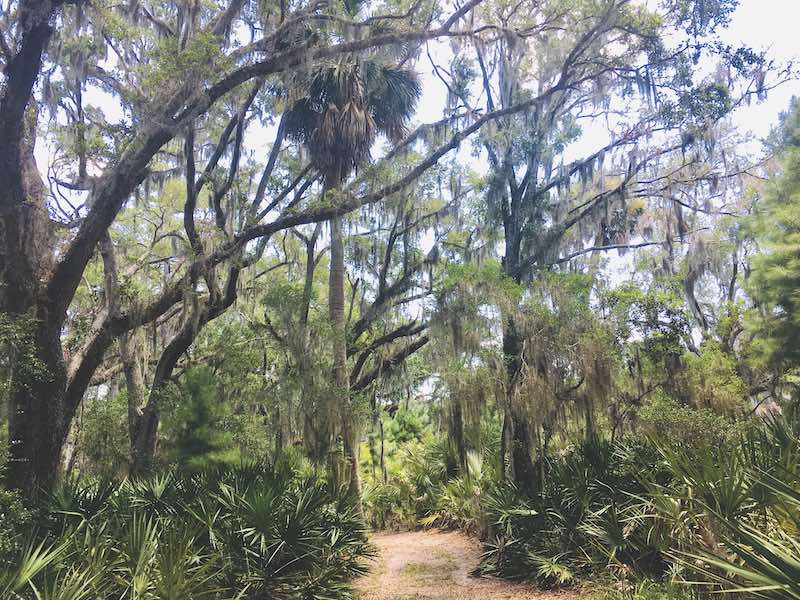
Location: Northeast of Hilton Head
Activities: Hiking, shelling, beach walking, photography
What to bring: Water, snacks, extra layers
Wildlife to watch for: Sharks, dolphins, turtles, bald eagles, painted buntings
Fun fact: After purchasing St. Phillips, Ted Turner eradicated the island’s destructive feral hogs and reintroduced endangered fox squirrels and indigo snakes.
Visitor tip: Take a ferry from Hunting Island State Park. There is no other way to reach St. Phillips.
Nearby attraction: Hunting Island State Park has delightful hiking trails and a spectacular bone-yard beach.
